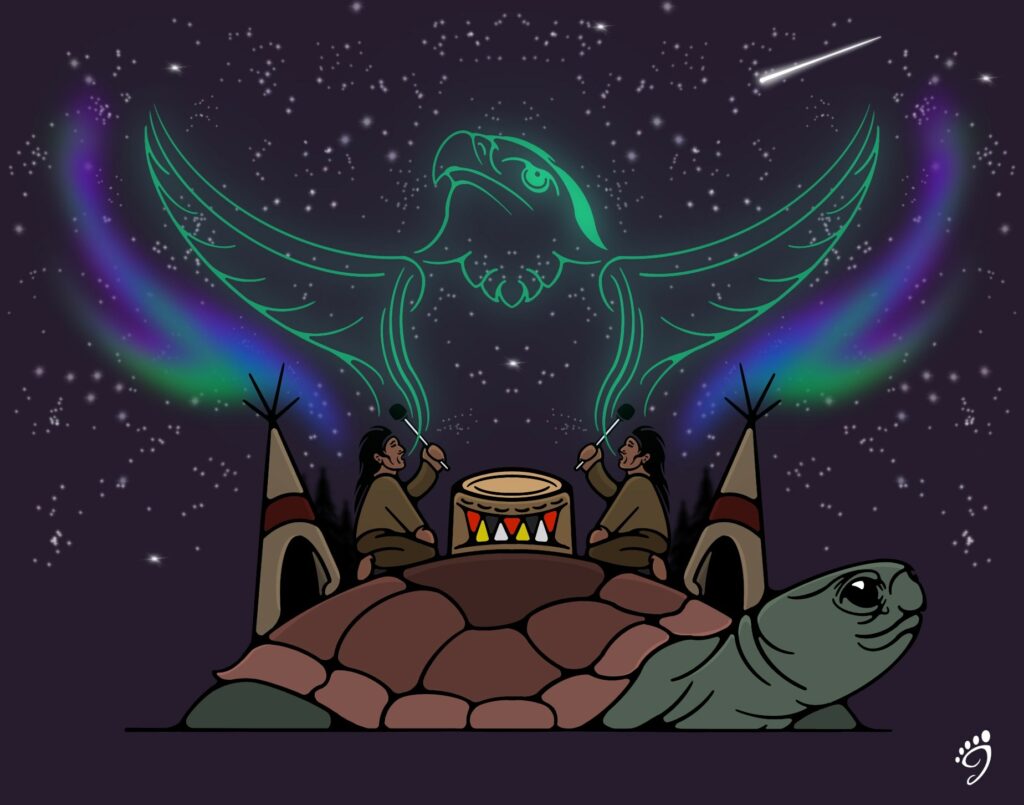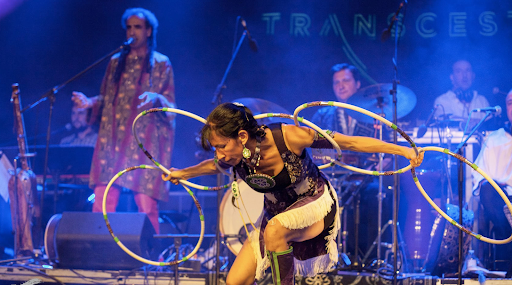Turtle Island © Joseph Lane
Interview and comments © Jocelyn Montalban
Original art © Joseph Lane
If you prefer to read this as a PDF, please click HERE
Joseph Lane Nindiznikaaz (Nin-Di-Shni-Cause) is an Ojibwe artist from Thunder Bay, Ontario Nindoonjibaa (Nin-Dough-n-ji-Baa). Joseph attended the Visual College of Art and Design (VCAD) in Vancouver, British Columbia where he was able to explore various art mediums including traditional 2D animation, storyboarding, sculpting, 3-D modelling, and life drawing. Joseph graduated as a rigger in 2016. A rigger is a professional in charge of creating and configuring the control systems that allow characters and objects to be animated in an animated production. A rigger is essential to bringing characters and objects to life in the animated world, ensuring they can move expressively and believably. Today, Joseph creates art pieces digitally using the ProCreate graphic design software. Throughout his journey, Joseph has discovered the power of art as a critical tool for personal expression, healing, bridging cultures, and as a catalyst for community engagement.
“I am a 32-year-old Ojibwe artist. When I was young, I never thought that my doodles in my school notebooks would turn into me becoming an artist selling my work. I grew up as an urban youth born in Brampton, ON, and moved back and forth from Thunder Bay, until I moved here at the age of 12, so I had very little exposure to my Indigenous culture growing up. Growing up we didn’t have much, my mom was always working, my father was always working but was in and out of my life for the first 15 years. My Kookum (Grandmother) on my father’s side was MaryJane Mainvillle, she was a survivor of the Residential school system.”
Joseph Lane
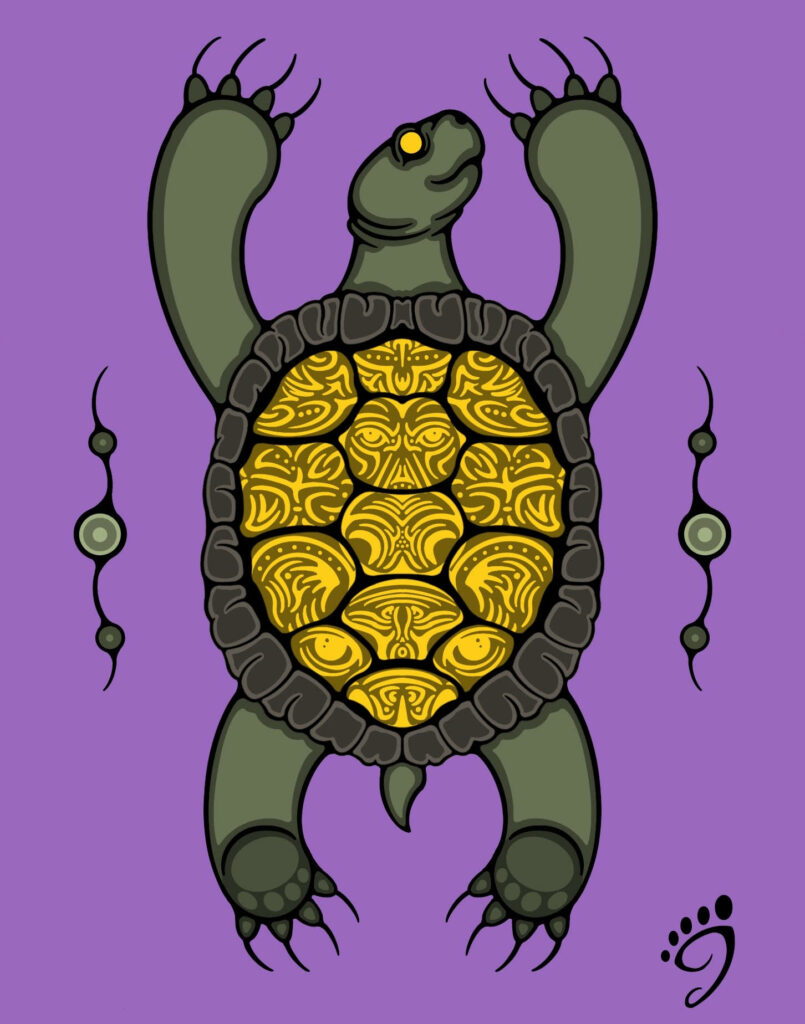
“This past summer I had purchased a turtle shell from a vendor at a pow-wow. I looked for what animals I could see in each shell. This is the shell I chose. This is to show just how beautiful and artistic the world around us is. I may have changed some of the lines on the turtle’s back but If you look at the actual shell you can see the image.” Joseph Lane
I met Joseph in February via a video conversation, during which he discussed the life experiences that brought him to where he is now in his creative path. He eloquently expressed how digital art has become an integral part of his life and has helped him deepen his connection with his Indigenous culture, something that was not always prevalent growing up as an Indigenous youth in an urban environment. It was not until Joseph began this journey of growth by way of art that he started to unearth the buried parts of his trauma, thus gradually crafting together the mosaic of his healing process.
“My family has struggled with generational trauma due to the residential schools; this caused a lot of issues with my cultural identity at a young age, especially growing up in an area like Brampton where there are multiple cultures. When I was younger, I was always taught “Someone has it worse than you”. Although this is true in certain circumstances, it reinforces minimization of personal struggles, suppressed emotions, perpetual comparison, and self-criticism. It wasn’t until I started this art journey that I began to heal from all my trauma.”
Joseph Lane
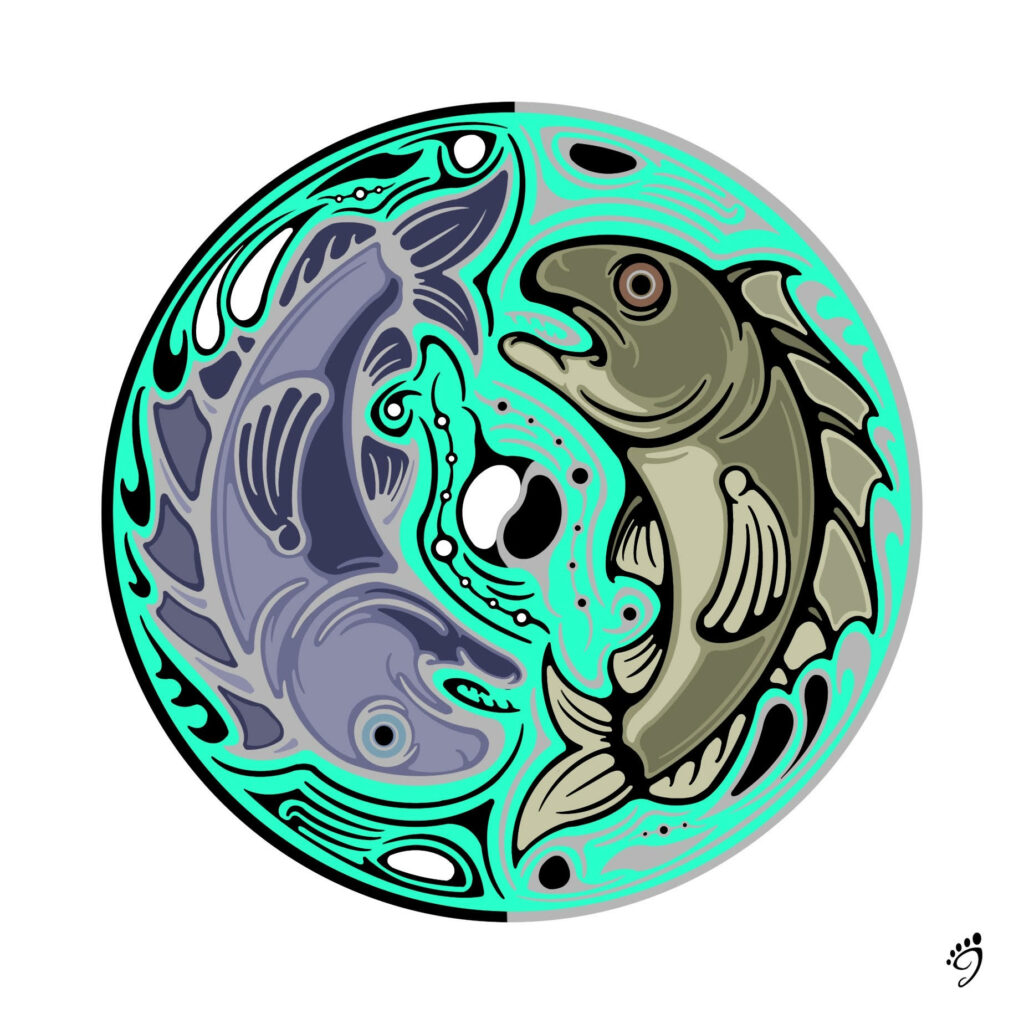
“This piece is inspired by another culture. To me the symbolism in the yin and yang design, it’s all about balance. In my culture, it is represented as the Medicine wheel.” Joseph Lane

“This is a piece I made to enter a contest called “water is life”. I did not win unfortunately but this piece represents how water is essential to life. From the newborn child in its mother’s womb, to the smallest turtle in the pond, to the man on the moon, Everything is affected by water.” Joseph Lane
As countries worldwide confronted the start of the COVID-19 pandemic, a period of uncertainty and disarray, life for Joseph underwent an unexpected turn, marked by great loss and personal anguish. Amid the backdrop of global upheaval, Joseph was presented with two harrowing events that would alter his trajectory.
“Fast forward to the beginning of the pandemic, I had two major events happen in my life. My cousin Eddie ended up going missing, we spent two weeks searching through the bush. His remains were found the following spring only 10 km from where we were looking but in the opposite direction. During this time, we had an elder with us (for me, what I learned is that an elder is someone in the community with a great spiritual connection with A-ki [the land] and the creator). We had found what we believed to be a sasquatch (Sabe – “Saw-bay”) footprint. I’m a size 13 foot and this was at least 1 inch longer than my shoe. The elder wanted to see the print, he offered a song that he said he was gifted from Sabe in a dream. This was an incredible experience, the trees and wind just carried the elder’s voice. When the elder first began to sing, you could hear something big walking in the bush line, it walked until it got to just out of sight, sat down. It listened to the elder’s song, got up, and walked further into the bush.
This experience is what started my art journey, but at this point, I was still unaware how much this would really ignite the artistic side of me.
During the first year of the pandemic, I suffered a ruptured disc in my back, this caused me to be bedridden for almost a full year. While still dealing with what had just happened the summer before, this caused me to fall into a very deep depression. I was put onto medication, but this only made my situation worse. I missed a dosage, and it caused me to reach that ledge of making a choice. It was during that split second I decided I wasn’t done, I ended up weaning myself off the medication and started to draw. This was when I started to see how healing art can be, and it doesn’t even have to be good art, that will come with time.”
Joseph Lane
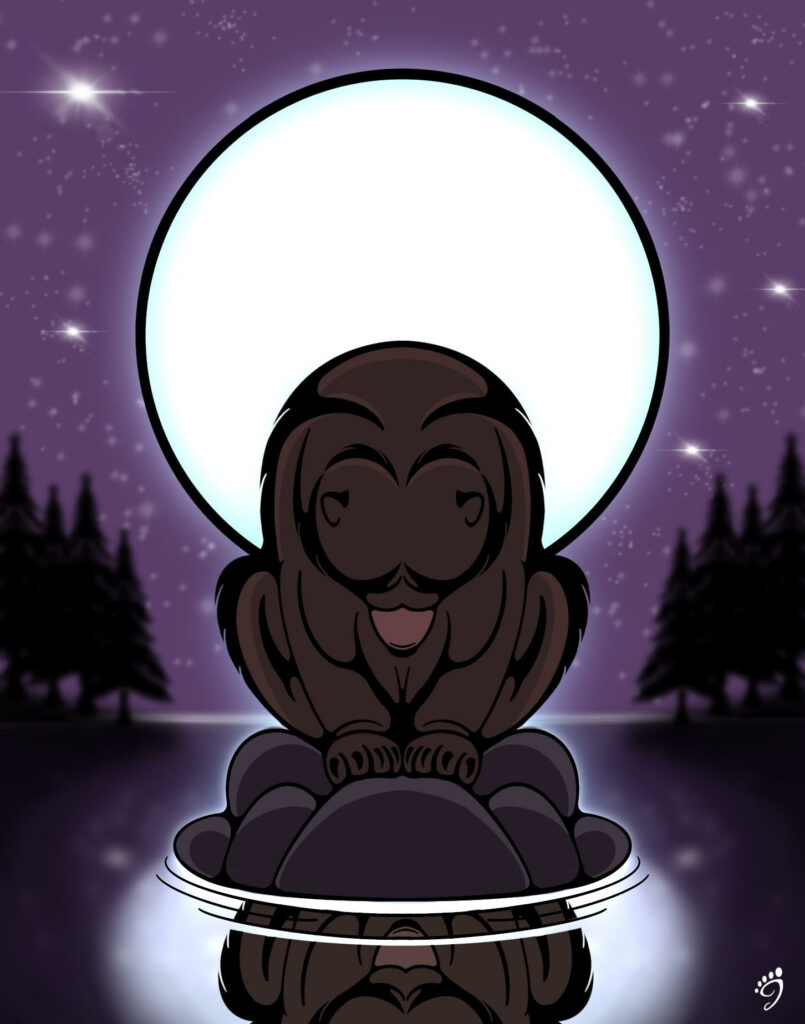
“This piece was one of my first pieces I really enjoyed. It allowed me to reflect on my life. This was at the point where I reached that ledge. I felt so alone. This isn’t a sad piece, it represents a sad time, but it also shows strength and resilience, to seek out different forms of healing and work through the trauma. I think to me this piece was to show people that you are not alone in your journey, do not be afraid to ask for help.” Joseph Lane
Reflecting on the progression of his artistic journey, Joseph recalls the humble beginnings of his artistic endeavours with humility and appreciation. The distinction between his early pieces and his present array of creations serves as a moving reminder of the transformational power of perseverance and fervour. While revealing the continual hurdles caused by recurring back problems, Joseph finds consolation and strength in his capacity to overcome hardship and has since rediscovered his enthusiasm for sports and physical fitness. Emboldened by his artistic development, Joseph has ventured into new creative worlds, shifting from digital art to the tactile medium of painting, while also pursuing further education to become a teacher.
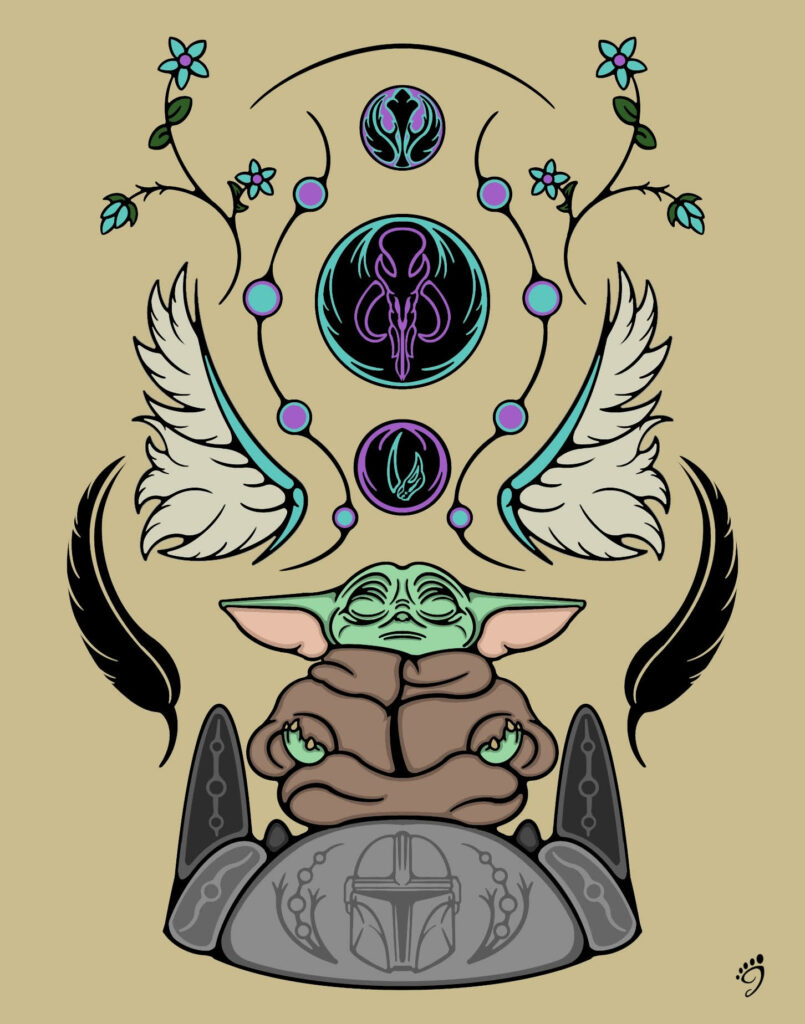
“This is one of my pieces I did for pop culture. It was made when season 2 of the Mandalorian was released. It was to show the growth in the character and how he was able to strengthen his connection to his “culture”. I also found out recently that Star Wars is actually based on Indigenous stories.” Joseph Lane
Concentrating on the influence of his creative journey, Joseph acknowledges its dual purpose as a catalyst for personal healing and a channel for building meaningful connections within the community. Joseph considers his art as a passport to inquiry, which allows him to go to different regions and immerse himself in the vast tapestry of world cultures and artistic traditions. Driven by a genuine desire to elevate and empower others, Joseph sees his art not just as a form of personal expression, but also as a platform for advocacy and social change, hoping to leave an everlasting mark of kindness and compassion behind.
“My art has not only allowed me to start my healing journey, but it has also been able to make so many connections in my life and allow me to become a humbler person. My aspirations for my art are to travel, I would love to be able to travel to different communities and learn about other cultures and art forms. I enjoy being able to make money off my art, but it is not my goal, I enjoy meeting people and sharing stories. Having people come back to my booth and tell me how much they enjoy my art is an amazing experience. I also want to become a voice and advocate for people, my overall goal with my life is to help others succeed and make life better for all.”
Joseph Lane
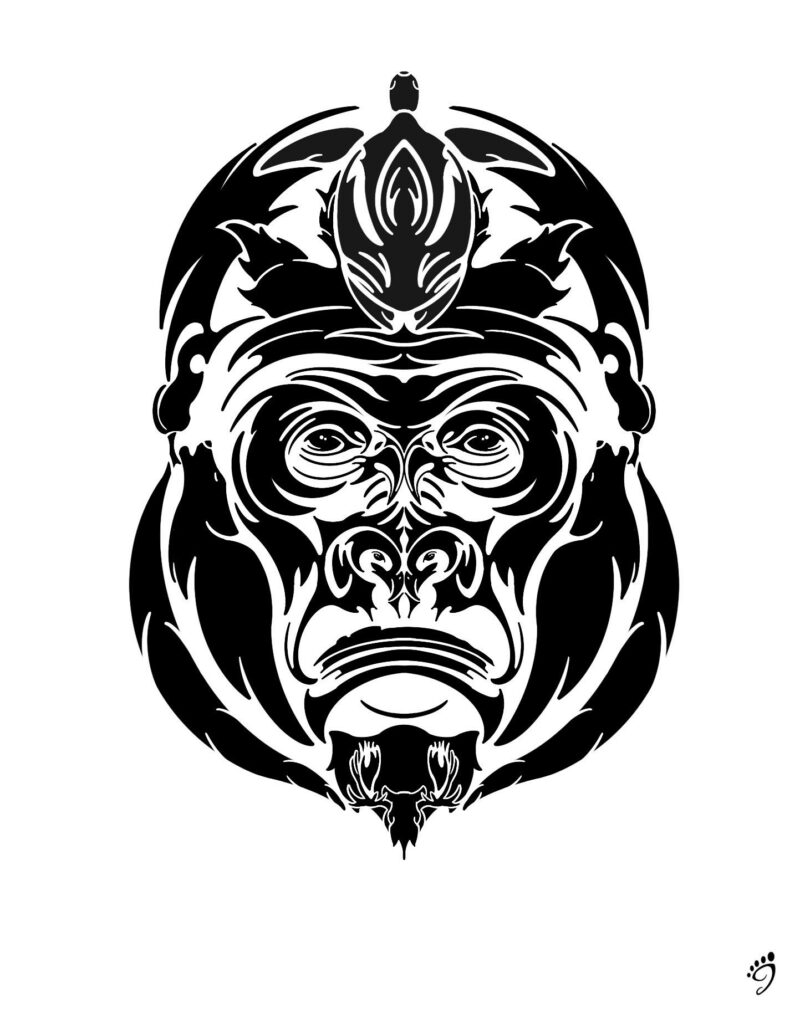
“This piece I never gave a name to. The intention was not to make a piece to sell but to make a piece that could show people how my brain works when I look for animals inside of others. My art is a conversation piece, I want people to see things that maybe even I missed.” Joseph Lane
Joseph Lane’s story serves as a poignant reminder of the transformational power that comes from embracing one’s artistic path. As he continues to navigate the complexity of life and artistry, Joseph encourages others to follow their artistic pursuits, believing that each person possesses the capacity to weave beauty and significance into the fabric of existence. With this philosophy as his guiding light, Joseph encourages everyone to find their medium, explore freely, and revel in the delight of the artistic experience.
Joseph reminds us…
“Art is all around us, EVERYONE is an artist. If you want to get into any art form, just do it. Don’t be afraid to “fail.” It’s through our failures that we learn. Even the greatest artists in the world all started from stick figures. You just need to find your medium. Explore, and enjoy the journey.”
Miigwetch bizin-da-wiyeg (Me-gwitch, Bi-zin-da-we-yeg)!
For more about Joseph Lane
- Joseph’s Facebook page: https://www.facebook.com/p/Sabe-Studios-100078844638037/?locale=ga_IE
About Jocelyn Montalban
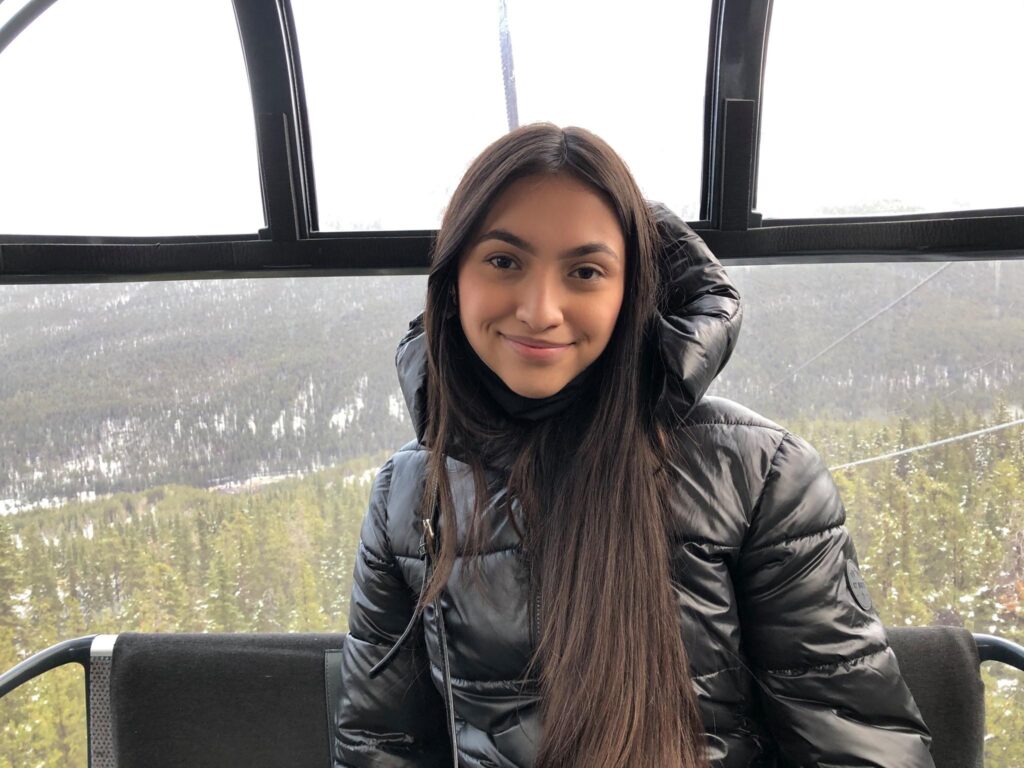
Jocelyn Montalban was born in Ontario, Canada, where she currently resides. Her parents immigrated to Canada from Guatemala City in 1997. In 2023, she obtained a bachelor’s degree in criminology from Lakehead University (Ontario, Canada). She is currently studying to obtain a master’s degree in Social Justice Studies. Her research focuses on Indigenous issues in Canada. In her free time, you can find her traveling or hiking in the mountains.
Art as Self-Discovery and Healing. Joseph Lane © Jocelyn Montalban
Original Art © Joseph Lane ~ Siwar Mayu, April 2024.

